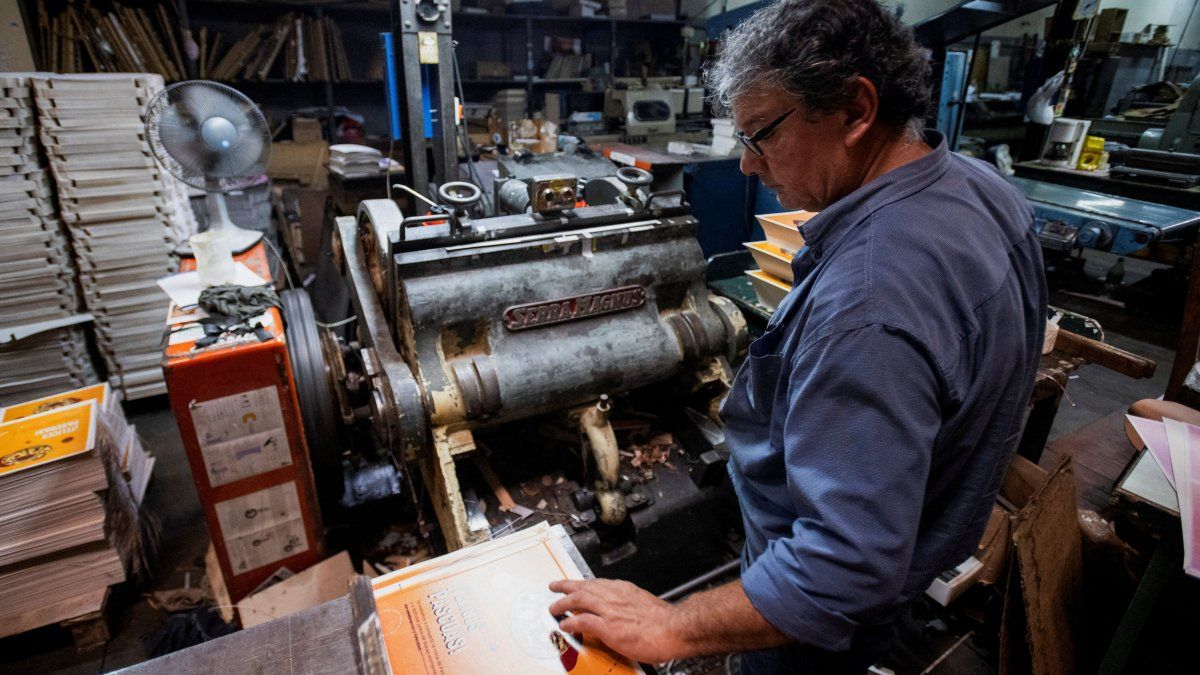SMEs province by province
SMEs are geographically concentrated in a few provinces: Province of Buenos Aires concentrates 32%, CABA another 18.4%, Córdoba 9.9% and Santa Fe 9.5%. Between these four provinces they cover 71% of the total SMEs in the country.
In terms of population density, the jurisdiction with the greatest presence of SME companies per 1,000 inhabitants is the Autonomous City of Buenos Aires (34.3), followed by La Pampa (19.8) and Tierra del Fuego (16.1).
As of 2021 (the last complete one available in OEDE), there were 536,000 active SMEs employers throughout the country. Of that total, 50,350 (9.4%) were industrial: 5,526 medium-sized, 17,179 small and 27,650 micro companies (with employment registered in 2021).
22,312 industrial MSMEs are located in the PBA (41.3% of the industrial MSMEs in the entire country), divided between 15,435 in Greater Buenos Aires and another 6,877 in the rest of the Province. Another 9,828 (18.2% of the country) are based in CABA. Santa Fe (10.2% of the total industrial MSMEs), Córdoba (9.4%), Mendoza (4.3%) and Entre Ríos (2.6%) are the other provinces with a high participation in the total MSMEs Argentine industrialists.
What is SME employment like?
Taking all sectors into account, SMEs represent 97.8% of all companies who declare registered employment in Argentina.
The participation of the SMEs in it total number of companies has fallen between 1996 and 2021slowly but steadily: in 1996 SMEs represented 98.5% of companies.
December data: SME activity sector by sector
The activity in the manufacturing sector fell -5.4% in December compared to the previous month. On a year-on-year basis, it consolidated a drop of -12.8%. The last seven months it fell consecutively year-on-year, so that in a total of eight months in the year it had a negative evolution (February 2023 is added).
TO month-on-month level, accumulates three months of decline. Prior to the stagnation in September (+0.1% im), there were four more consecutive months of decline. In total, it fell in nine months on a month-on-month basis throughout the year. All this represents a cumulative -1.8%.
All the industrial sectors fell year-on-year in December and only two (of nine) grew in month-on-month terms: automotive and other transportation equipment (+3.8% month-on-month) and textiles, clothing, leather and footwear (+2.2%). Among those that fell the most, “other equipment, appliances and instruments” fell -42.2% yoy, followed by “metal products, machinery and equipment” (-28.6% yoy) and “furniture and other manufacturing industries” (-26.5% yoy).
Consequently, the proportion used of the installed capacity in the industry: It was 54.9% in the last month of 2023, below the 66.4% of December 22 but also from the end of the year during the 2018-2020 crisis (when it was between 56.6% and 58.4% ). The sectors with the highest level of use of their installed capacity were oil refining with 85%; paper and cardboard, 67.3%; and basic metal industries, 64.5%.
At the opposite extreme, those with the least use of their productive potential were automotive industry, 42.6%; textiles, 39.9%; and metalworking, 37.9%. Precisely metalworking was the one with the greatest drop in the last twelve months, since in Dec-22 it had registered an ICU of 54.6%; The main reason for this precipitous decline was the lower manufacturing of agricultural machinery (-50.7% year-on-year in December).
pymes4.png
The mining sector was the only one that grew in 2023.
In the same line as the manufacturing industry, Construction activity fell -12.2% yoy in December 2023 and -8.8% im. In all of 2023, it only showed positive interannual evolution in the months of January (+2.7% im), March (+1.4% im) and October (+3% im). December was the first month with a double-digit year-on-year drop since the same month in 2022. In month-on-month terms, it only showed positive evolution in four months.
With the December value, they are consolidated four consecutive months of decline. Thus the accumulated in 2023 reached -3%. Jobs grew, however, by +0.6% yoy
The fishing industry, For its part, it also reflects a year-on-year drop in December 2023 (-6.2% yoy), although with an improvement in activity compared to November (+6.7% yoy). However, the accumulated fall in the year was -7.1%.
The mining sector was the only industrial sector that had a positive evolution in 2023. In December it grew +10.8% yoy and +6.6% im Except for February (-0.8% im), May (-0.4% im) September (-1.2% im) and October (- 0.1% im), the rest of the months grew on a month-on-month basis, and in all of them on a year-on-year basis. Consequently, the accumulated growth was 9.7%.
Source: Ambito




